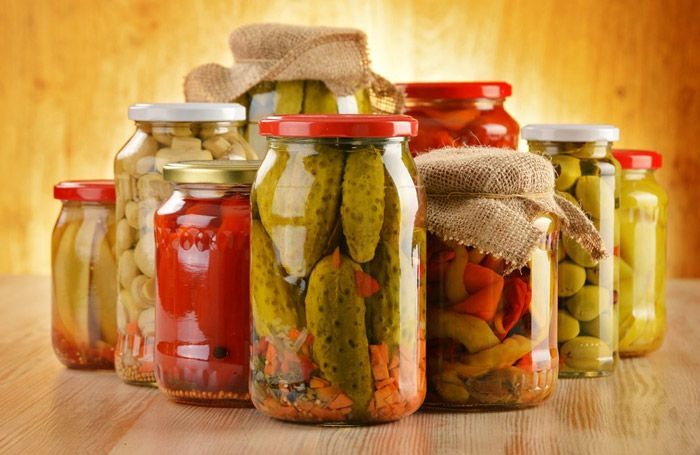Note: This article was written several years ago by the late Judy Swain. Re-publishing in summer 2023.
You might be surprised to know that 6,000 years ago… what? 4,000 B.C.?… yes… people in China were preserving cabbage WITHOUT the use of freezers or even canners. They made sauerkraut even then. Captain Cook took 60 barrels of sauerkraut when he set out on his second around the world tour. No, this was not that famous around the world in 90 days tour. This one took 27 months. When the captain opened the very last barrel, while anchored off the coast of Portugal, after those 27 months of incessant rocking and tossing on oceans of all heights and lows, in weather and temperatures of all kinds, it was still PERFECT. So perfect that when he served it to some Portuguese noblemen who had come on board, they insisted on carrying it home to their friends.
Incidentally, there were NO cases of scurvy during that voyage. Normally the disease decimated crews on long ocean voyages, but the sauerkraut had preserved enough vitamin C to preserve the health of the sailors.
So, we are not as brilliant as we think we are? Well, yes, sure we are. It’s just that ancient peoples were brilliant first. How else did we get here?
People in different cultures all around the globe have used the process of ‘lacto-fermentation’ to preserve vegetables, and fruits, and grains, and dairy products, and meats for remarkably long periods of time. And their windows didn’t steam up… their containers weren’t sterile… no hydro bills . How did they do it?
You probably know that we can harness certain yeasts to transform the sugar in grapes into the alcohol in wine?
Lacto-fermentation harnesses the lactic-acid-producing bacteria that naturally occur on the surfaces of all living things. The lactic acid they produce perfectly preserves vegetables and fruits. The lactic acid inhibits the evil-smelling, decomposition capabilities of other bacteria that would like to consume them. Hence, no need for sterility or pasteurization. Cleanliness, yes. Sterility, no. These same lacto-bacilli produce numerous enzymes that enhance the digestibility of the foods in our gut. They add vitamins to our intestinal tracts. Their presence enhances our immunity to unwanted organisms that long to colonize that gut. Their presence enables many other beneficial flora to live there. And they make the food taste EXTRA good. You can say ‘Thank You’ now!
So, are the pickles we eat nowadays, the ones lining the shelves of the grocery stores and decorating our hamburgers, the same? Are they really this good for us?
Unfortunately, no. The vinegars used for commercial preparation are pretty acidic, the bacteria and enzymes have all been destroyed by the cooking and canning. No extra vitamins being added. But hey will keep forever. However…
Well, you ask, why don’t we do it the old way?
The answer is: WE CAN.
It is a fairly simple process. There are guides that you can find online and in books. There have been and will be workshops in our area to demonstrate the methods used. Hands on does give confidence to most of us, don’t you agree. There’s always YouTube…
It is a relief to many, certainly to me, to know I need not cook all day, steam up my kitchen, handle burning hot jars and lids and canners, carefully avoiding burning myself, mis-timing the duration, starting over, or disturbing the seals of the jars while they seal themselves. In fermentation, there is NO cooking involved.
No, the process entails washing but not scouring the foods to be fermented, since we want to keep those friendly bacteria on the leaves or skins. It means chopping or shredding the produce. You add some salt to deter the unwanted critters while our friends are busy proliferating. They can then produce the burst of lactic acid that will deter the bad guys for good. You might add an inoculant, such as whey, to speed up the process. Usually there is some pulverizing or pounding to be done. This releases the juices to immerse the produce. Fermentation is an anaerobic process, so it is important that the juices cover the contents. Once the produce is in the jars there is a waiting period – usually two to four days – in a nice, mildly warm spot that encourages the multiplication of the lacto-bacilli. Then the jars go into storage, in cool, dark places, while their flavours and their nutrient content grow.
That is really all there is to it. And it’s kind of fun. Think about my squash experiment reported in last week’s column. Who would have thought you could make sauerkraut out of squash? Well, maybe not sauerkraut but ‘sauersquaw’, yes… And who would want to, you might say?… Well, maybe someone with lots of squash ? Or someone who doesn’t actually like the ”kraut’ version? Someone who wants to eat this summer’s produce next winter? next year maybe? [It was a bumper crop.] Or just someone adventurous… People around the world have fermented almost everything, including your favorite dill pickles, ‘cornichons’, carrots, turnips, beets, eggplant, garlic, green tomatoes, peppers, even lettuces, mango, apple, pear [think chutney] and plum [umeboshi plums in Japan].
What a surprising world we live in!




